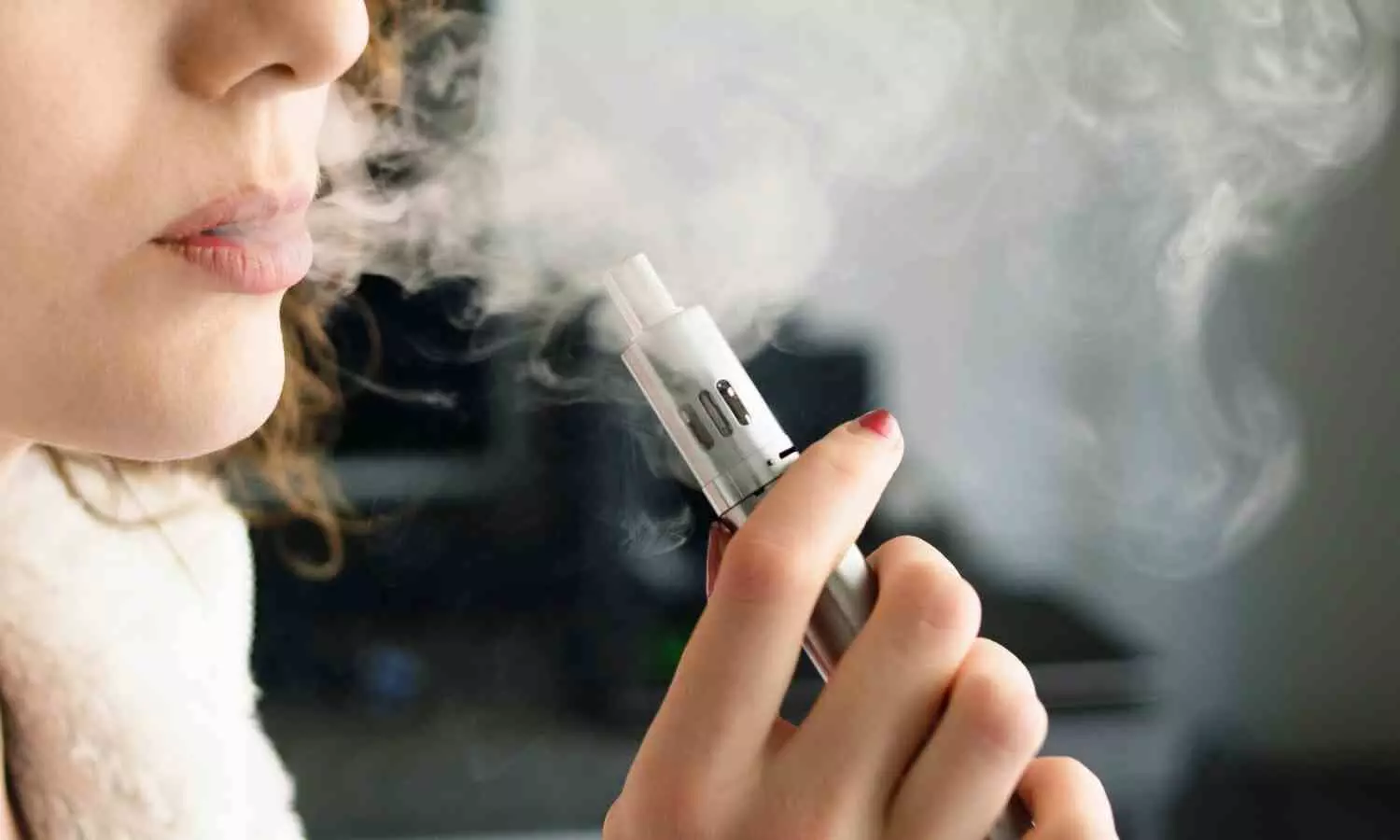Teens who see social media posts showing cannabis or e-cigarettes, including from friends and influencers, are more likely to later start using those substances or to report using them in the past month, according to surveys done by researchers at the Keck School of Medicine of USC.Viewing such posts was linked to cannabis use, as well as dual use of cannabis and e-cigarettes (vapes). Dual use refers to youth who have used both cannabis and e-cigarettes at some point. The results were just published in JAMA Network Open.The findings come amid a decline in youth e-cigarette use, reported in 2024 by the U.S. Food and Drug Administration (FDA) and U.S. Centers for Disease Control and Prevention. However, teen vaping, cannabis use and the dual use of e-cigarettes and cannabis remain a problem.“While the rate of e-cigarette use is declining, our study shows that exposure to e-cigarette content on social media still contributes to the risk of using e-cigarettes with other substances, like cannabis,” said Julia Vassey, MPH, a health behavior researcher in the Department of Population and Public Health Sciences at the Keck School of Medicine.The study, funded by the National Institutes of Health, also helps clarify how certain types of social media posts relate to teen substance use. Researchers surveyed more than 7,600 teens across two studies: a longitudinal study to understand whether viewing cannabis or e-cigarette posts on TikTok, Instagram and YouTube relates to a teen’s later choice to start using either substance or both, and a second survey looking at whether an association exists between the source of the content— friends, influencers, celebrities or brands—and substance use.“Answering these questions can help federal regulators and social media platforms create guidelines geared toward preventing youth substance use,” Vassey said.Links across substancesData for the study came from California high school students, with an average age of 17, who completed questionnaires on classroom computers between 2021 and 2023. Researchers conducted two surveys, one focused on teens who used cannabis, e-cigarettes or both for the first time, the other focused on use during the past month.In the first survey, which included 4,232 students, 22.9% reported frequently seeing e-cigarette posts on TikTok, Instagram or YouTube, meaning they saw at least one post per week. A smaller portion—12%—frequently saw cannabis posts.One year later, researchers followed up with the students. Teens who had frequently seen cannabis posts—but had never tried cannabis or e-cigarettes—were more likely to have started using e-cigarettes, cannabis or both. Teens who had frequently seen e-cigarette posts on TikTok were more likely to have started using cannabis or started dual use of both cannabis and e-cigarettes. No such pattern was found for Instagram or YouTube. The data collected allowed researchers to look at platform-specific results for e-cigarettes posts, but not for cannabis posts.“This is consistent with previous research showing that, of the three platforms, TikTok is probably the strongest risk factor for substance use,” Vassey said. That may be because TikTok’s algorithm pushes popular content broadly, including posts that feature e-cigarettes, even to users who don’t follow the accounts.In the second survey, researchers asked 3,380 students whether they saw cannabis or e-cigarette posts from brands, friends, celebrities, or influencers with 10,000 to 100,000 followers. Teens who saw e-cigarette or cannabis posts from influencers were more likely than their peers to have used cannabis in the past month. Those who saw e-cigarette posts from friends were more likely to have been dual users of cannabis and e-cigarettes in the past month. Those who saw cannabis posts from friends were more likely to have used cannabis in the past month or to have been dual users of cannabis and e-cigarettes.The link between e-cigarette posts and cannabis use is what researchers call a “cross-substance association” and may be explained by the similar appearance of nicotine and cannabis vaping devices, Vassey said.The risks of influencer contentInfluencer posts deserve special attention because they often slip through loopholes in federal rules and platform guidelines. For example, the FDA can only regulate content when brand partnerships are disclosed, but influencers—consciously or not—may skip disclosures in some posts.Studies show that these seemingly unsponsored posts are seen as more authentic, Vassey said, making them particularly influential.Most social media platforms already ban paid promotion of cannabis and tobacco products, including e-cigarettes. Some researchers say those bans should be extended to cover additional influencer content. Others want platforms to partner with regulators to find a comprehensive solution.“So far, it’s a grey area, and nobody has provided a clear answer on how we should act and when,” Vassey said.In future…
